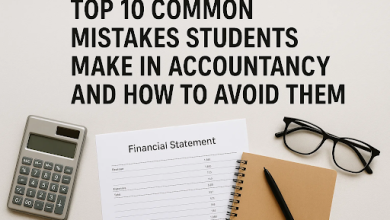Tech Accessibility for Disabled People and the use of AI

Technology is the focal point of the world’s progress. Everybody indulges in technical aspects to complete responsibilities, personal usage or a professional task. But when technology is not accessible in the workplace, it becomes a hurdle for employees. Especially when facilitating people with disabilities, tech accessibility is of utmost need. Disable people need to interact with technical gadgets to fulfil daily tasks like getting groceries and food. It becomes difficult for them to excel in life. The unavailability of technology makes such people unable to perform their duties due to their disabilities at the workplace.
If the organisation provide proper technologically advanced access to people with disabilities, it can optimise organisational and individual levels. To gives edged to these people, artificial intelligence plays a vital role. Artificial intelligence is not only restricted to science fiction films as in robots. But also it has great importance in our daily life. It is more inclined towards using reality and making people with disabilities able to succeed in life. AI has truly brought a change in the life of people with disabilities. These people can improve their daily life due to tech accessibility.
Smartphones started making changes in the lives of people. Those who have a visual impairment can get help through these powerful tools. For example, a smartphone camera allows visually impaired people to read their emails. It happens when they place their documents under the camera of a smartphone. Artificial intelligence is beneficial for any disability. For example, people who can’t move or have the aspect of reduced mobility can control everything. Through virtual personal assistance, such as Amazon Alexa or Siri, they can do it and perform their daily chores.
Here we will discuss some important aspects of how artificial intelligence has played its role and how it has made it possible to excel for people with disabilities through tech accessibility.
Artificial Intelligence and Tech Accessibility:
AI is referred to as algorithms or smart machines built to use human reasoning only better. These machines are capable of different cognitive tasks. Artificial intelligence makes it possible to do everything with ease, from playing games to performing daily chores. When it comes to searching and getting access to the required information, Google uses machine learning. As the algorithm of Google collects the searches of internet users. It collects information about what people like on the different social networks. This way, the algorithm provides more accurate recommendations accordingly.
Billions of people use Google as a search engine. Therefore, artificial intelligence becomes the central point. Anybody with disabilities can have access to Google and artificial intelligence. In other words, we can say that tech accessibility has been made easy for them by Google. In general words, technology has an important part in inaccessibility.
Similarly, artificial intelligence specifically possesses a key role in tech accessibility for disabled folks. It is all about how people with disabilities can improve their lives? What can artificial intelligence bring towards tech accessibility for them?
Communication:
According to a dissertation help firm, it is challenging for people with disabilities to communicate with others. Artificial intelligence plays a great role in connecting people with similar disabilities. Tech accessibility through artificial intelligence brings superior results.
Tech Accessibility for Visual Impaired People:
For blind people, technology makes it easy to get connected with others. There are different ways for this purpose. A few of them are as follows.
Siri:
Siri is the iPhone’s virtual assistant. It helps people by doing a Google search to text a message to call someone and operate all the devices connected to the internet via home automation. People who have visual disabilities can get benefit from it. It helps them communicate with others and get help easily by calling out “Hey Siri”.
Voiceover:
The Voiceover is a screen reader. It is directly integrated into iPhones to make communication easy for blind people. The main and actual purpose of Voiceover is to enunciate the messages on the screen. But there are several other uses of Voiceover as well. It uses artificial intelligence to identify the icons of different apps.
Apps that help Disabled people:
People who have disabilities, tech accessibility and AI play a huge role in their lives. Some Apps that assist are as follows.
Ava:
Ava is a transcription app that works by using artificial intelligence. It helps in transcribing the conversation in communication within individuals or groups. The algorithm of Ava handles different aspects. For example, it adds punctuation. It adds the name of the talking person. It also includes the essential vocabulary from the user’s dictionary to make things easy for disabled people so that they can follow the conversation and take part in it.
Google Assistant and Siri:
You can get help from Siri and Google Assistant when you have smartphones. It helps the user to use their smartphones to the full extent. The user can remain fully connected with its help.
IFTTT:
IFTTT makes the connections with other apps so that performing tasks becomes easy. For example, reading an email aloud is possible. Also, they can send a Tweet.
Conclusion:
Tech accessibility due to artificial intelligence helps disabled folks spend their lives with ease. It brings opportunities for everyone, despite having a disability, so that such people can have an equal chance of success.




